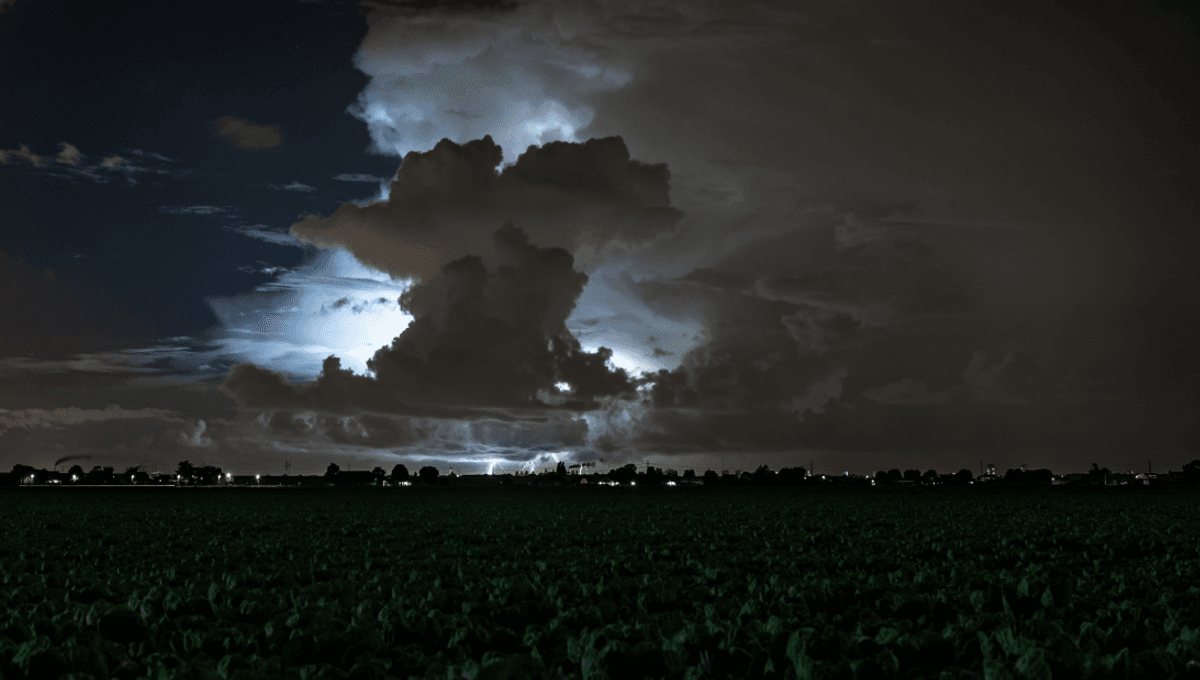
A magnitude 6.8 earthquake struck Morocco’s High Atlas Mountains on Friday, September 8, 2023, making it the biggest to hit the country in 123 years. Some who witnessed the disaster first-hand have reported seeing flashing lights shortly before the earthquake began, and it’s a phenomenon that isn’t unfamiliar to scientists.
Earthquake lights is the name given to a range of weather phenomena that have been reported in association with earthquakes, including sheet lightning, balls of light, streamers, and steady glow, reports the United States Geological Survey. Despite having been reported for centuries, they are rare, and often unexplained, but there are some leading theories as to why we sometimes see strange lights shortly before, or during, an earthquake.
“These luminous phenomena occur in different shapes, forms and colors, as diffuse airglows in the sky, as sudden outbursts of light from the ground, as cold flames licking up ankle-high, as luminous objects described as fiery pillars rising from the ground, as glowing balls floating through the air, and other rarer manifestations,” reads a 2019 paper on the underlying mechanism of earthquake lights by physicist Friedemann Freund, who was once based at NASA’s Ames Research Center in California.
Doubts surrounding the legitimacy of earthquake lights were dampened following the first photos, which Freund says were obtained during the Matsushiro earthquake swarm near Nagano in Japan between 1965 and 1967. Now that surveillance, dashcam, and doorbell cameras are becoming increasingly common, we have all sorts of ways to capture strange phenomena on film, making it easier to study.
Footage from the devastating earthquake in Morocco does appear to show flashing lights, and similar footage has been obtained from the Aquila earthquake in Italy in 2009, and the 2021 earthquake in Acapulco, Mexico. While some have suggested that tectonic activity could disturb electrical lines causing earthquake-associated light shows, it was Freund’s idea that instead, the source lay in the Earth’s crust.
Earthquakes generate mechanical stress for the Earth’s crust as tectonic forces push plates together – in the case of Morocco, this was the African plate moving north and colliding with the Eurasian plate. It’s possible this stress generates electric charge carriers that can move through the crust to create electric currents, and when these reach the surface, they ionize the air and create luminous phenomena similar to lightning.
The exact mechanism behind earthquake lights remains up for debate, and given that the light shows that have fallen under the umbrella term often look very different, it may be that there’s more than one legitimate explanation. Understanding how and why they occur could be pivotal in the way we predict tectonic activity, as scientists are always on the lookout for ways to pre-empt events like the earthquake in Morocco in the hope that we can save lives.
Source Link: Earthquake Lights Have Been Reported In Morocco, But What Are they?